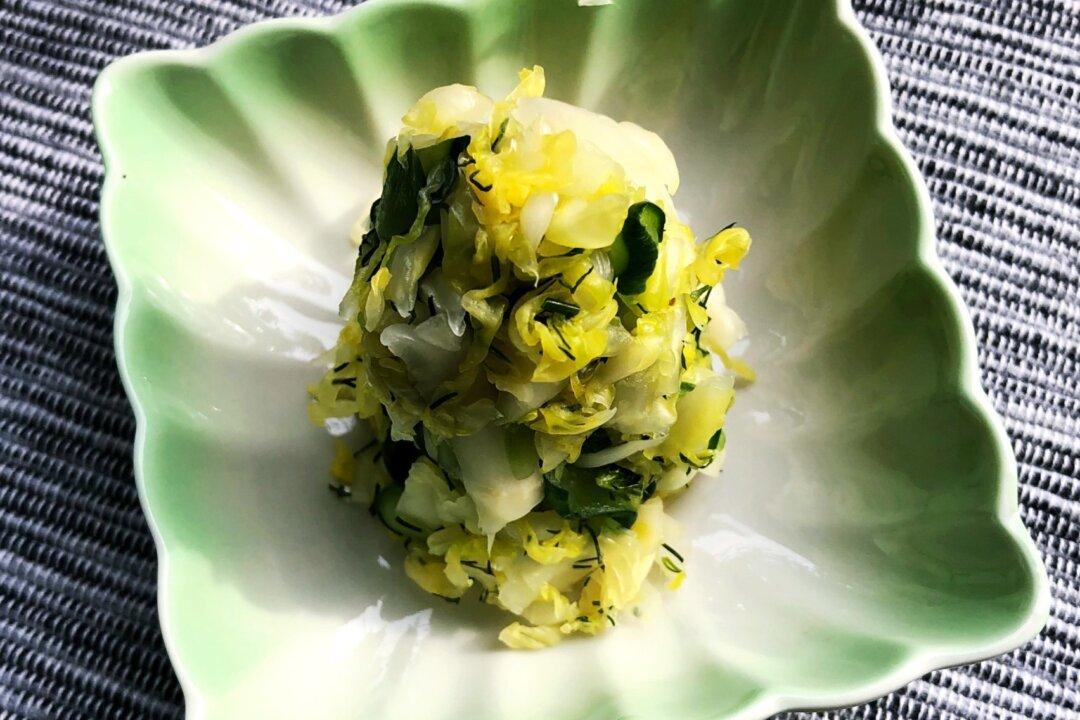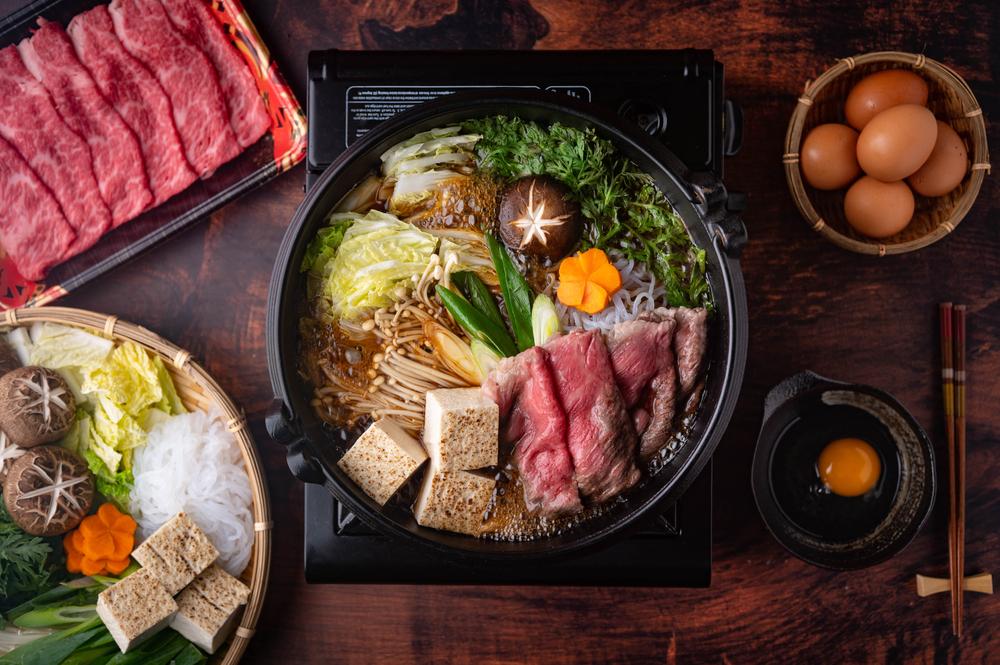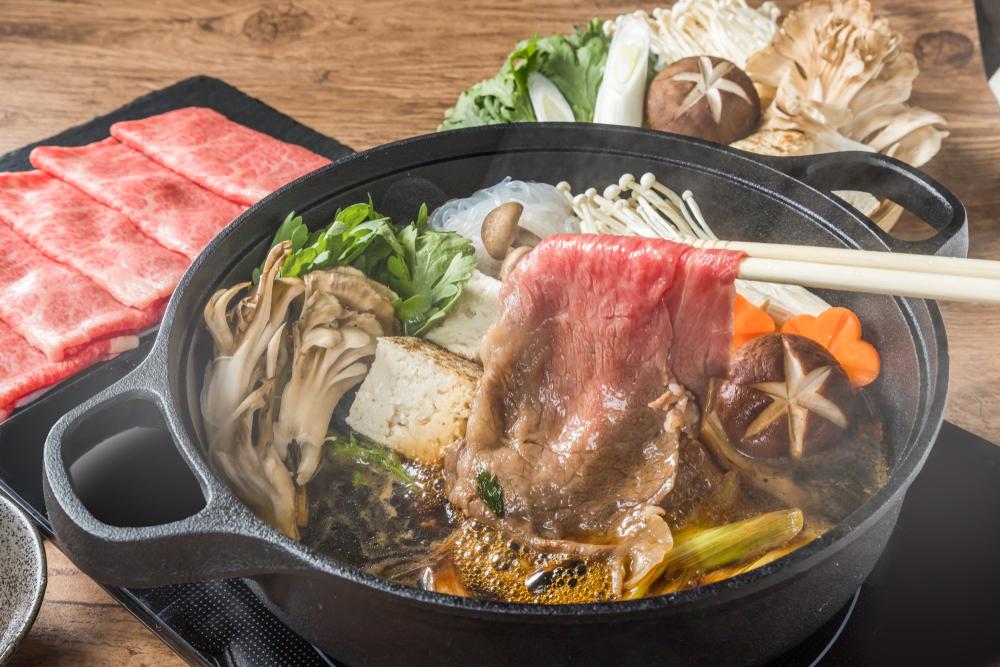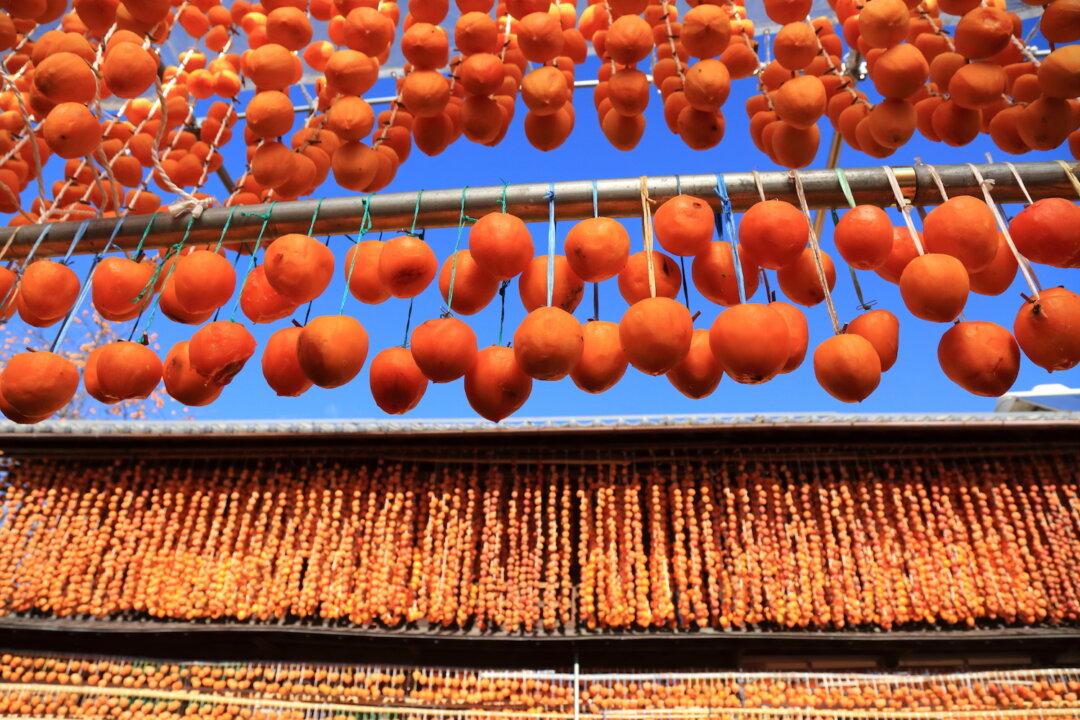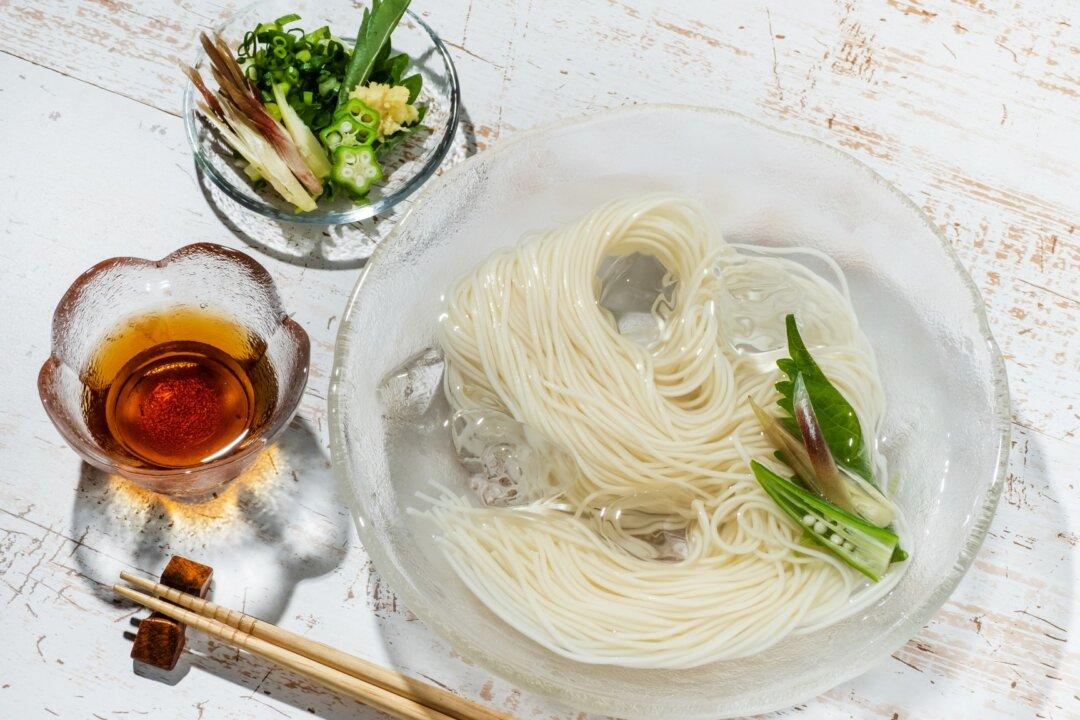Shiomomi, the salt-massaged method, is the perfect place to start making Japanese-style pickles, or tsukemono. This recipe is adapted with permission from Elizabeth Andoh’s “Impatient Pickles.”
Serves 2 to 3 as a side
- 1 small, dense portion of cabbage (about 6 to 8 ounces), washed, dried, and sliced thinly, as if you are preparing a slaw
- 1 small cucumber (about 2 ounces), washed and sliced (unpeeled) into paper-thin rounds
- 1 1/2 teaspoon coarse or flaky sea salt
- 1-inch piece kombu (optional, see Note)
- 1 tablespoon fresh herbs, such as dill or mint, or organic citrus zest

